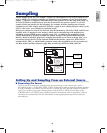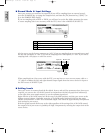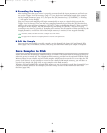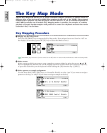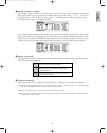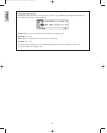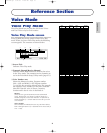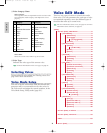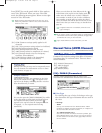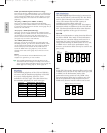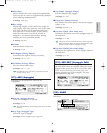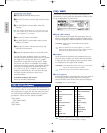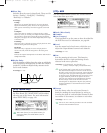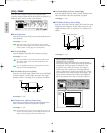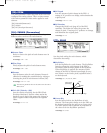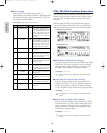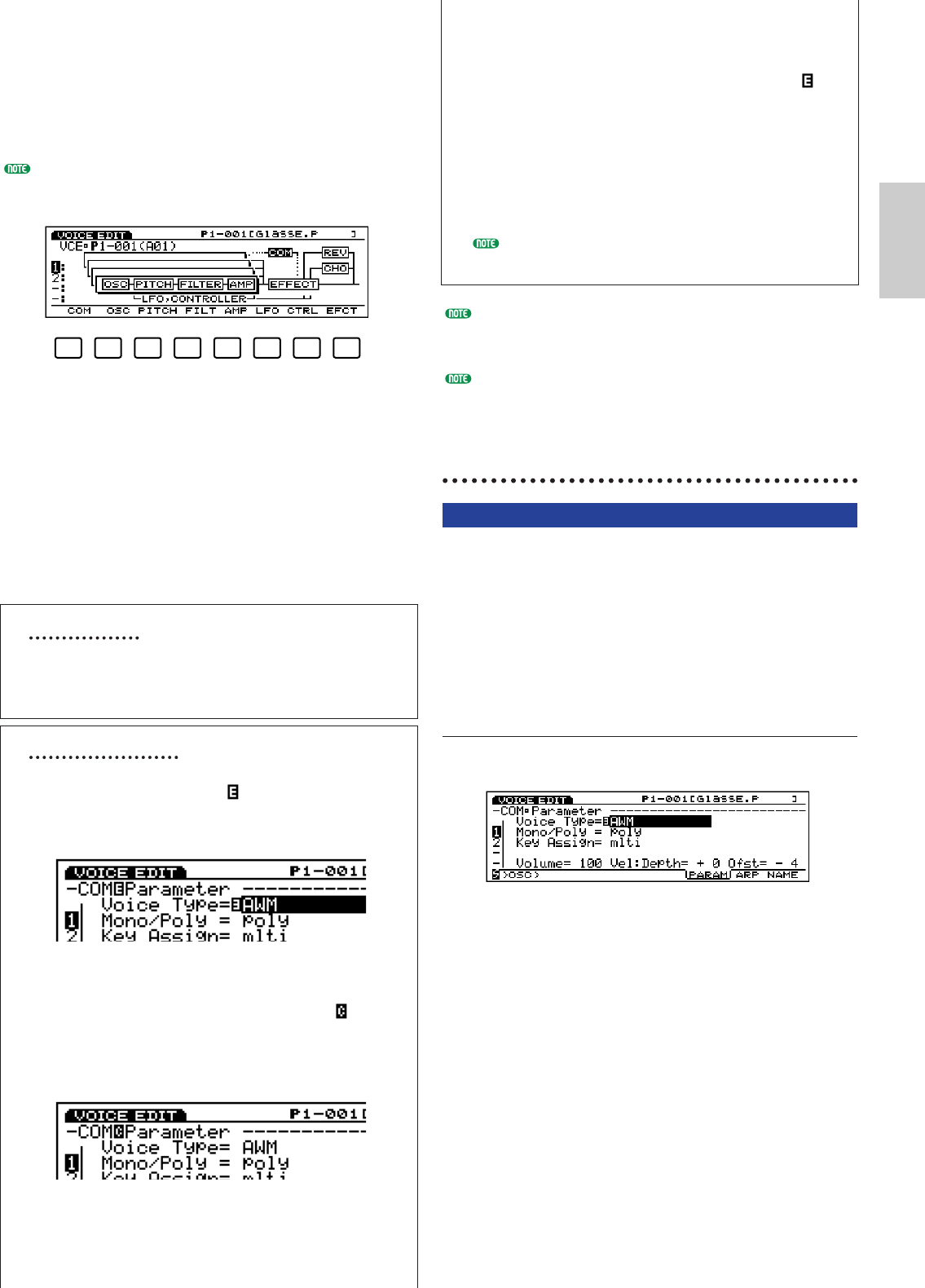
Press [EDIT] key on the panel while in Voice mode to
enter Voice Edit mode. When you enter Voice Edit
mode, the following menu appears. Below are the eight
menus in Voice Edit mode.
Before entering Voice Edit mode, select the voice to be
edited. All parameters within a voice can be edited and
stored as a new voice.
[F1]: COM (Common settings equally applied to all
elements)
[F2]: OSC (Tone generator settings related to Oscillator)
[F3]: PITCH (Settings related to Pitch)
[F4]: FILT (Settings related to Filter, for tone)
[F5]: AMP (Settings related to Amplitude, for volume)
[F6]: LFO (Settings related to the Low Frequency
Oscillator, for modulation)
[F7]: CTRL (Settings related to the Controllers)
[F8]: EFCT (Settings related to the Effects)
Element Mute
During voice edit you may need to temporarily mute
the rest elements. For information on how to mute
each element, see page 44.
Compare and Store
The moment you alter any parameter in the Voice
Edit mode a small inverse “ ” will appear at the
top left on the display, indicating that the voice has
been edited but not yet stored.
You can also press the [EDIT/COMPARE] key while
in the edit mode to switch back and forth between
the original and edited sound (an inverse “ ”
appears at the top left when the Compare function
is engaged – i.e. the original sound is being
monitored).
F1 F2 F3 F4 F5 F6 F7 F8
When you exit from the Voice Edit mode the “ ”
will remain at the top left on the display until you
either store the edited voice or select a different
voice number or mode. If you do select a different
voice number or mode prior to storing the edited
voice, the edited data will be lost! So be sure to store
edited voice data you want to keep, as described on
page 48.
Compare function is not available, when the voice
type is changed.
If you want to create a voice from scratch, it will be handy to
use initialize voice function (Voice Job mode, see page 148)
to initialize the voice you have selected.
Up to 1024 elements can be stored onto your EX.
Normal Voice (AWM Element)
[F1]: COM (Common)
Common Edit includes settings that affect all elements
(maximum four) in a selected voice. There are three
menus available.
[F6]: PARAM (Parameters)
[F7]: ARP (Arpeggio)
[F3]: [ARP EDIT]
[F8]: NAME (Name)
[F6]: PARAM (Parameters)
Various control parameters such as Voice Type
determine the fundamental characteristics of a voice.
■ Voice Type
For selecting the type of voice. Selecting a voice type
also determines the type of elements that are used in
the voice.
❏ Settings:
AWM:
Uses up to a maximum of four AWM elements. AWM
elements are digitally recorded waveforms, or “samples” of
musical instrument and other sounds.
VL+AWM (EX5/5R only):
Uses one VL element for Virtual Acoustic synthesis, plus
three AWM elements. Once the VL voice type is selected,
the first element in the OSC screen (page 108) is fixed to
the VL element.
77
Voice Mode
Voice4pdf/E.qx 3/15/99 8:34 PM Page 77



